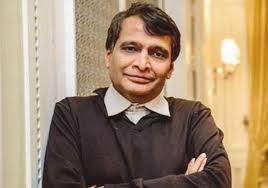
Minister of Railways Shri Suresh Prabhu unveiled Mission 41k during the Roundtable Discussion with External Stakeholders on Energy Initiatives of Indian Railways. Shri Suresh Prabhu said that Ministry of Railways has come up with Mission 41k to save Rs. 41000 crore in the next decade in Railways’ energy costs. To implement this comprehensive strategy with the participation of various stakeholders, we shall take advantage of regulatory frameworks, look at new technologies. He said that this is an opportunity to relook at everything and determine an ideal baseline. All electrification works done in the last decade would be doubled and this would change the energy mix of Indian Railways. Indian Railways has set a target of 1000 MW of solar power and 200 MW of wind energy.
Shri Prabhu also informed that around 15 – 16 Roundtable Conferences with Stakeholders are in the pipeline on various initiatives of Indian Railways. He said that a Round Table discussion is planned on Data Analytics. Indian Railways generates massive amounts of data and has a huge captive audience. Ability to optimally utilise these will generate additional revenue for the Indian Railways.
Chairman Railway Board, Shri AK Mital said that a target of moving 45% of the freight traffic can be achieved only when it can move freight in a cost efficient manner. This has led to Railways competing with road sector. At present 70% traffic runs on electric traction. In next 6 -7 years target has been set to run 90% of the traffic on electric traction. By procuring electricity through open access, the cost of electricity procurement comes down drastically which contributes 25% of the working expenses. He also said that Ministry of Railways has launched Mission Raftaar to increase the average speed of movement by 5 kmph every year. Another important Mission for Indian Railways is the establishment of High hp Locomotive manufacturing plants at Madhepura and Marhaura.
Member Traction Shri AK Kapoor said that Railways have about 50 % tracks electrified as of now which greatly contributes in keeping the energy bill low & reducing the carbon footprint. Ministry of Railways want to take electrification to 90% in next few years through our Mission Electrification with an aim to reduce dependence on imported fuel, change energy mix, and rationalize the cost of energy for Railways. As part of this, it has embarked upon electrification of additional 24,000 Rkm, i.e., about 90% of Railway BG routes in next 5 years by taking the present rate of electrification from 2000 Rkm to 4000 Rkm in next 2 years. To achieve this, Ministry of Railways have planned to incorporate EPC Mode of Contracts for Railway Electrification Projects, Mechanise the execution through Self Propelled Wiring Trains etc. This will increase the mobility, reduce energy bill to improve viability of Railways and also reduce carbon footprint. Ministry of Railways wish to develop partnership, improve our delivery of electrification projects by having suggestions from industry.
The Roundtable Discussion was attended by members and senior officials from the Railway Board and representatives from various Government and Private agencies in the field of energy, International Experts and Industry Associations.
Background:
India’s economy has seen unprecedented growth during the last decade with average growth of 7–8% per annum in last few years. With economic growth, the passenger and freight traffic on the Indian Railways is expected to grow from 3,635 billion passenger kilometres and 961 billion tonne kilometres respectively in 2005 to 19,427 billion passenger kilometres and 6,677 billion tonne kilometres respectively by 2030 i.e., an increase of more than 6 folds.
Rail as a mode of transport needs to enhance its capacity. The saturation of capacity of the Indian Railways on the Golden Quadrilateral has weighed heavily on the mind of Indian policymakers while taking the decision to construct dedicated freight corridors (Dedicated Freight Corridor). The construction of these Dedicated Freight Corridors would enable the Indian Railways to meet the growing demand for freight transport and induce a modal shift of freight traffic from road to rail. Since both corridors are to have more energy efficient locos powered by electric traction, the completion of Dedicated Freight Corridor project would lead to higher operational efficiency, resulting in substantial energy saving and significant reduction of GHG emissions.
Energy is a vital input for production and growth. Considering universal energy access and energy security as one of the fundamental development goals for the country, Government of India (GoI) has undertaken a two pronged approach – energy efficiency and Reduction in cost of energy. India has a definite plan for progressing more towards use of cleaner energy and factor in energy efficiency in its usage. Railways are taking number of steps to reduce energy consumption by using various energy-efficient technologies.
Although, rail as a mode of transport has less specific energy consumption than road for passenger and freight movement, the share of the road sector in Indian transport has witnessed a steady rise at the cost of the rail sector.
Speed of railway traffic has been increasing gradually, however for ensuring sustained efforts in the direction of substantial increase in the speed of freight and passenger traffic, and time bound delivery, Ministry of Railways have launched Mission Raftaar. To achieve the objectives of higher speed under Mission Raftaar, Ministry of Railways are also manufacturing energy efficient high horsepower electric locomotives and Electric Multiple Units at our plants in Madhepura, Kancharapara and Diesel locomotives factory at Marhaura. These locomotives shall be manufactured in India under the ‘Make in India’ program of the government. Looking at the future needs of this fast growing nation, it has been decided to upgrade speed potential on some routes to 160 kmph. For this, 2×25 kV Electrification system shall be implemented.
Railway has plans to change its energy mix and shall be using Green Energy. Railway is going to install solar and wind plants for using green energy on its system. To change energy mix towards Green energy in a phased manner, Ministry of Railways plan to set up 1000 MW solar and about 200 MW wind plants.
Development of new technologies shall provide opportunities for new innovations by entrepreneurs and local industries shall support the government’s ‘Stand up India’ program. This discussion will help the Indian Railways to explore new energy-efficient technologies and develop a roadmap for sustainable future growth.
For taking forward these deliberation, this roundtable discussion has been organised in the field of Railway Electrification, Energy Management, Fuel Efficiency and Electric & Diesel Traction. These discussions will help Indian Railways meet its goal to serve people in a more effective and efficient manner.



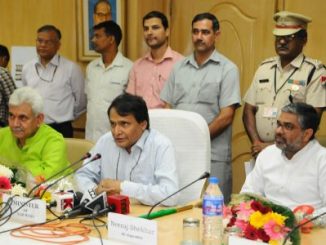
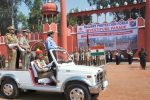
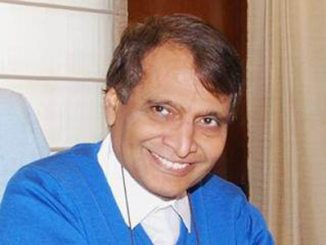
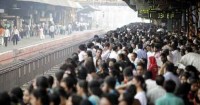
Leave a Reply
You must be logged in to post a comment.